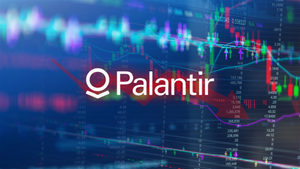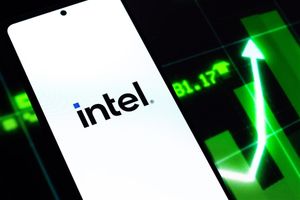The final 2025 KDIGO Guideline suggests treatment with Nefecon should be considered in the majority of patients at risk of progressive loss of kidney function
Asahi Kasei, a global provider of healthcare and pharmaceutical solutions, announced that Nefecon (marketed in the United States as TARPEYO® (budesonide) delayed release capsules), has been included in the Kidney Disease: Improving Global Outcomes (KDIGO) 2025 Clinical Practice Guideline for the Management of IgA Nephropathy (IgAN) and Immunoglobulin A Vasculitis (IgAV).
TARPEYO is a key product in Asahi Kasei’s pharmaceutical business, which the company has identified as a strategic growth area in its medium-term management plan. The inclusion of Nefecon in the KDIGO guidelines underscores its place in therapy and is expected to further support sustainable, long-term growth within Asahi Kasei’s healthcare portfolio.
The updated KDIGO 2025 guideline aims to standardize care and improve outcomes by providing evidence-based recommendations related to IgAN diagnosis, prognosis and treatment.1 It is considered the global standard for nephrology practice and plays a central role in shaping treatment decisions for patients with IgAN.
The KDIGO 2025 guideline suggests treatment with a 9-month course of Nefecon for patients at risk of progressive loss of kidney function, recognizing the treatment benefit of Nefecon in reducing the loss of kidney function and reducing proteinuria as demonstrated in the NefIgArd phase 3 randomized placebo-controlled trial.2,3 The effect of Nefecon on proteinuria and kidney function was assessed in adults with biopsy-proven IgAN who were on a stable dose of maximally tolerated RAS inhibitor therapy. Adverse events were mild or moderate and generally resolved after treatment cessation. KDIGO also notes that Nefecon is the only treatment approved for IgAN to date that has been proven to reduce the levels of pathogenic forms of IgA, which is an underlying cause of the disease.1,4*
“The inclusion of Nefecon in the KDIGO 2025 Guideline provides important external validation of its place in therapy. It also reinforces its role as the first and only approved therapy for IgAN shown to reduce the levels of pathogenic IgA and as an essential part of the comprehensive treatment approach now suggested by KDIGO,” said Ken Shinomiya, Leader of the Healthcare sector of Asahi Kasei.
About Nefecon
Nefecon is an oral 4 mg targeted-release formulation of budesonide, designed to dissolve in the pH of the distal ileum. Each capsule contains coated beads of budesonide that target mucosal B-cells present in the ileum, including the Peyer's patches, which are responsible for the production of galactose-deficient IgA1 antibodies (Gd-IgAg1), causing IgA nephropathy. It has not been established to what extent the efficacy of Nefecon is mediated via local effects in the ileum vs. systemic effects.
Nefecon’s approval status, labeled indication, and availability vary globally. It is approved in the United States where it is marketed as TARPEYO® (budesonide) delayed-release capsules by Calliditas Therapeutics. It is available in the European Economic Area (EEA) where it is marketed by STADA Arzneimittel AG and in select countries in Asia, including Mainland China, Hong Kong, Macau, Taiwan, and Singapore where it is marketed by Everest Medicines. It is also in development in Japan by Viatris.
About the NeflgArd Study
NefIgArd was a global, Phase 3, randomized, double-blind, placebo-controlled, multicenter study to evaluate the efficacy and safety of Nefecon 16 mg once daily vs placebo in adult patients with primary IgAN (N=364) in addition to optimized RASi therapy. Patients were randomized 1:1 to receive 16 mg/day oral capsules of Nefecon or matching placebo for 9 months, followed by a 15-month observational follow-up period without the study drug.
The primary efficacy endpoint was time-weighted average of eGFR over 2 years. The time-weighted average of eGFR over 2 years showed a statistically significant treatment benefit with Nefecon versus placebo (difference 5.05 mL/min per 1.73 m² [95% CI 3.24 to 7.38], p<0.0001). The mean reduction in UPCR from baseline was 35% at the end of treatment (month 9), with a 52% reduction achieved at 12 months, and a 34% reduction at month 24 (15 months off treatment).
The most common adverse reactions with Nefecon (occurring in ≥5% of Nefecon treated patients and ≥2% higher than placebo) were peripheral edema (17%), hypertension (12%), muscle spasms (12%), acne (11%), headache (10%), upper respiratory tract infection (8%), face edema (8%), weight increase (7%), dyspepsia (7%), dermatitis (6%), arthralgia (6%), and white blood cell count increase (6%).
About Primary Immunoglobulin A Nephropathy
Primary immunoglobulin A nephropathy (IgA nephropathy or IgAN or Berger's Disease) is a rare, progressive, chronic immune-mediated disease that attacks the kidneys and occurs when galactose-deficient IgA1 is recognized by autoantibodies, creating IgA1 containing immune complexes that become deposited in the glomerular mesangium of the kidney. This deposition in the kidney can lead to progressive kidney damage, potentially resulting in end-stage kidney disease. IgAN most often develops between the late teens and late 30s.
* Data are exploratory. Clinical significance has not been established.
IMPORTANT SAFETY INFORMATION FOR US AUDIENCE
INDICATION
TARPEYO is indicated to reduce the loss of kidney function in adults with primary immunoglobulin A nephropathy (IgAN) who are at risk for disease progression.
IMPORTANT SAFETY INFORMATION
CONTRAINDICATIONS
TARPEYO is contraindicated in patients with hypersensitivity to budesonide or any of the ingredients of TARPEYO. Serious hypersensitivity reactions, including anaphylaxis, have occurred with other budesonide formulations.
WARNINGS AND PRECAUTIONS
Hypercorticism and adrenal axis suppression: When corticosteroids are used chronically, systemic effects such as hypercorticism and adrenal suppression may occur. Corticosteroids can reduce the response of the hypothalamus-pituitary-adrenal (HPA) axis to stress. In situations where patients are subject to surgery or other stress situations, supplementation with a systemic corticosteroid is recommended. When discontinuing therapy or switching between corticosteroids, monitor for signs of adrenal axis suppression.
Patients with moderate to severe hepatic impairment (Child-Pugh Class B and C respectively) could be at an increased risk of hypercorticism and adrenal axis suppression due to an increased systemic exposure to oral budesonide. Avoid use in patients with severe hepatic impairment (Child-Pugh Class C). Monitor for increased signs and/or symptoms of hypercorticism in patients with moderate hepatic impairment (Child-Pugh Class B).
Immunosuppression and Increased Risk of Infection: Corticosteroids, including TARPEYO, suppress the immune system and increase the risk of infection with any pathogen, including viral, bacterial, fungal, protozoan, or helminthic pathogens. Corticosteroids can: reduce resistance to new infections, exacerbate existing infections, increase the risk of disseminated infections, increase the risk of reactivation or exacerbation of latent infections, and mask some signs of infection. Corticosteroid-associated infections can sometimes be serious. Monitor for infection and consider TARPEYO withdrawal as needed.
Avoid corticosteroid therapy, including TARPEYO, in patients with active or quiescent tuberculosis or hepatitis B infection; untreated fungal, bacterial, systemic viral, or parasitic infections; ocular herpes simplex; or Kaposi’s sarcoma. Avoid exposure to active, easily-transmitted infections (e.g., chickenpox, measles). Corticosteroid therapy may decrease the immune response to some vaccines.
Other corticosteroid effects: TARPEYO is a systemically available corticosteroid and is expected to cause related adverse reactions. Monitor patients with hypertension, prediabetes, diabetes mellitus, osteoporosis, peptic ulcer, glaucoma or cataracts, or with a family history of diabetes or glaucoma, or with any other condition where corticosteroids may have unwanted effects.
ADVERSE REACTIONS
In clinical studies, the most common adverse reactions with TARPEYO (occurring in ≥5% of TARPEYO treated patients, and ≥2% higher than placebo) were peripheral edema (17%), hypertension (12%), muscle spasms (12%), acne (11%), headache (10%), upper respiratory tract infection (8%), face edema (8%), weight increased (7%), dyspepsia (7%), dermatitis (6%), arthralgia (6%), and white blood cell count increased (6%).
DRUG INTERACTIONS
Budesonide is a substrate for CYP3A4. Avoid use with potent CYP3A4 inhibitors, such as ketoconazole, itraconazole, ritonavir, indinavir, saquinavir, erythromycin, and cyclosporine. Avoid ingestion of grapefruit juice with TARPEYO. Intake of grapefruit juice, which inhibits CYP3A4 activity, can increase the systemic exposure to budesonide.
USE IN SPECIFIC POPULATIONS
Pregnancy: The available data from published case series, epidemiological studies, and reviews with oral budesonide use in pregnant women have not identified a drug-associated risk of major birth defects, miscarriage, or other adverse maternal or fetal outcomes. There are risks to the mother and fetus associated with IgAN. Infants exposed to in-utero corticosteroids, including budesonide, are at risk for hypoadrenalism.
Please see Full Prescribing Information
About Asahi Kasei
The Asahi Kasei Group contributes to life and living for people around the world. Since its foundation in 1922 with ammonia and cellulose fiber business, Asahi Kasei has consistently grown through the proactive transformation of its business portfolio to meet the evolving needs of every age. With more than 50,000 employees worldwide, the company contributes to sustainable society by providing solutions to the world’s challenges through its three business sectors of Healthcare, Homes, and Material. For more information, visit www.asahi-kasei.com.
Asahi Kasei is also dedicated to sustainability initiatives and is contributing to reaching a carbon neutral society by 2050. To learn more, visit https://www.asahi-kasei.com/sustainability/.
References
- Kidney Disease: Improving Global Outcomes (KDIGO). KDIGO 2025 Clinical Practice Guideline for the Management of Immunoglobulin A Nephropathy (IgAN) and Immunoglobulin A Vasculitis (IgAV). Kidney Int. 2025 Oct;108(4S):S1-S71.
- Lafayette R, et al. Lancet. 2023;402(10405):859-870.
- TARPEYO. Prescribing information. Calliditas Therapeutics AB; 2024.
- Khan, I, et al. #2642 Effects of Nefecon on hits 1, 2, and 3 of the pathogenic cascade of IgA nephropathy: a full NefIgArd analysis. Nephrol Dial Tranplant. 2025 Oct 21; 40 (Supplement 3): Presented at ERA 2025, Vienna, Austria.
View source version on businesswire.com: https://www.businesswire.com/news/home/20251104149880/en/
Contacts
North America Contact:
Asahi Kasei America Inc.
Samantha Cronin
samantha.cronin@ak-america.com
Europe Contact:
Asahi Kasei Europe GmbH
Sebastian Schmidt
sebastian.schmidt@asahi-kasei.eu





